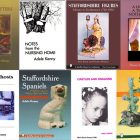Juan Villoro’s “The Guilty” Decenters What It Means To Be Mexican

Last month I found myself in the gardening section of a German supermarket where, on sale, I came across Mexican-themed cacti. Tiny, impossibly hairy things with googly eyes and black moustaches and pastel colored sombreros made of clay. Typical German kitsch. “That looks like my uncle Mario,” I thought. That moustache. Those manic eyes like, your mom told me you have a girlfriend. Or a wife. I could have been angry about it—my wife, being super German, was upset and embarrassed about it—but I was more intrigued by how many of them there were. Big ones, small ones, a thousand googly eyes painstakingly glued by some poor teenager who (only god knows) must have been pricked by those spines dozens and dozens of times. Beyond that I was intrigued by the essentialism of it all: That’s the Mexican outfit they chose for that cactus? How one culture distills another is endlessly fascinating to me. More fascinating than that, though, is how one culture sees itself distilled. Octavio Paz’s Labyrinth of Solitude does this, for example. Or, perhaps the thing I’m most excited about these days, Juan Villoro’s The Guilty (George Braziller), which gives us something more like a prism of Mexicanidad in seven short stories rather than a distillation.
For the uninitiated, Juan Villoro is one of Mexico’s premier writers and thinkers and is considered by many to be the greatest Mexican intellectual of his generation. He’s the son of the famous Spanish-Mexican philosopher and diplomat, Luis Villoro, and the author of over a dozen short story collections and novels in addition to various essays and chronicles. He’s a former DJ, a journalist, a noted soccer fanatic, and a public intellectual who manages to merge these worlds in his work more often than not, which make for characters as complex as they are unhinged. The Guilty, Villoro’s first book to be translated into English, explores the absurdities of Mexican life though such characters, many of which struggle with the anxieties surrounding authenticity, a theme that appears throughout the collection.
This is especially true of the last story in the book, “Amigos Mexicanos,” in which a vegan New York journalist named Katzenberg arrives in Mexico City on assignment with the fictional magazine Point Blank in search of Frida Kahlo’s authentic Mexico, which he essentializes into a country both savage and magical, confusing and inspiring much to the offense of our Mexican narrator who is hired by Katzenberg as a stringer to show Katzenberg this distilled (non-existent) version of Mexico, purely derived from gringo fantasy.
Our Mexican narrator, motivated by the cash that comes with the assignment, takes Katzenberg in search of his idealized version of Kahlo’s Mexico but struggles with the assignment as everywhere he takes Katzenberg is deemed too touristy or too gaudy by Katzenberg. When Katzenberg arrives a second time in Mexico City and pushes our narrator for a story on the city’s grit and danger, our narrator struggles because every incident of violence he’s ever encountered has happened in the most ordinary of places. So, he decides to stage a drug deal with a friendly acquaintance, which is when Katzenberg is kidnapped by an unknown assailant, much to the confusion of our narrator who didn’t actually expect to deliver on what Katzenberg had bargained for.
I think about this story a lot in relation to how contemporary Mexico is distilled and presented to American audiences today, especially in the news. Having lived and studied in Mexico, the archetype of Katzenberg is somewhat familiar to me: The white journalist/commentator at once enamored by the “danger” of Mexico, even going to the lengths of seeking it out, but always navigating that landscape with the knowledge, in the back of his/her mind, that they have the privilege of escape. Being the protagonist of their own journey, it’s unthinkable that anything might happen to them. Their lives are immune to the dangers—real or imagined—that other brown bodies might face. And in the self-serving interest of proving this point they put themselves in that danger again and again. They build their careers on telling a single story—an essentialized version—of what Mexico is. And in doing so, they colonize the Mexican narrative. Simply put, the Katzenbergs of the world have built a nonexistent version of Mexico, heavily based on the appetites and anecdotal fallacies of the American audience and by the very virtue of their story being a white, American story, they believe that reportage is somehow superior (or more informed) than the Mexican experience. At the very least they see their view of Mexico as equally valid as the lived experiences of their subjects.
The danger of a single story, as Chimamanda Ngozi Adichie has taught us, is that it can strip an entire people of their dignity. It can dehumanize and depersonalize something as complex as the immigration crisis or the contemporary war on drugs or the everyday Mexican life.
What I love about this Juan Villoro’s The Guilty is that it’s not shy about airing Mexican frustration with that American gaze. He writes in “Amigos Mexicanos,”
I’ll admit that I stuffed Katzenberg full of clichés and vernacular flashiness. But it was his fault. He wanted to see Iguanas in the street.
Mexico disappointed him, as if the whole country were some ceremonial site, commercialized and in ruins, full of peddlers hawking tanning oil to sun worshippers.
I introduced him to an expert on Mexican art and Katzenberg refused to talk with him. I should have quit right then; I couldn’t tolerate working for a racist.
Villoro’s writing, translated into English, is almost George Saundersesque: disarming, critical, and hilarious all at the same time. His writing is fueled mainly by the absurdity of the interpersonal, which largely decenters some of the macro things that an American audience might fetishize (the war on drugs, immigration, etc.), though those things are there too. The fact that The Guilty has been translated to English at all only adds to that decentering of the single story that American audiences have come to know about Mexico. At the very least his voice is a much welcome addition to the canon’s chorus.
Reading Villoro, I’m reminded of that famous Audre Lorde quote: “The master’s tools will never dismantle the master’s house.” In many ways, The Guilty is the tool the Mexican diaspora needs more than ever.



